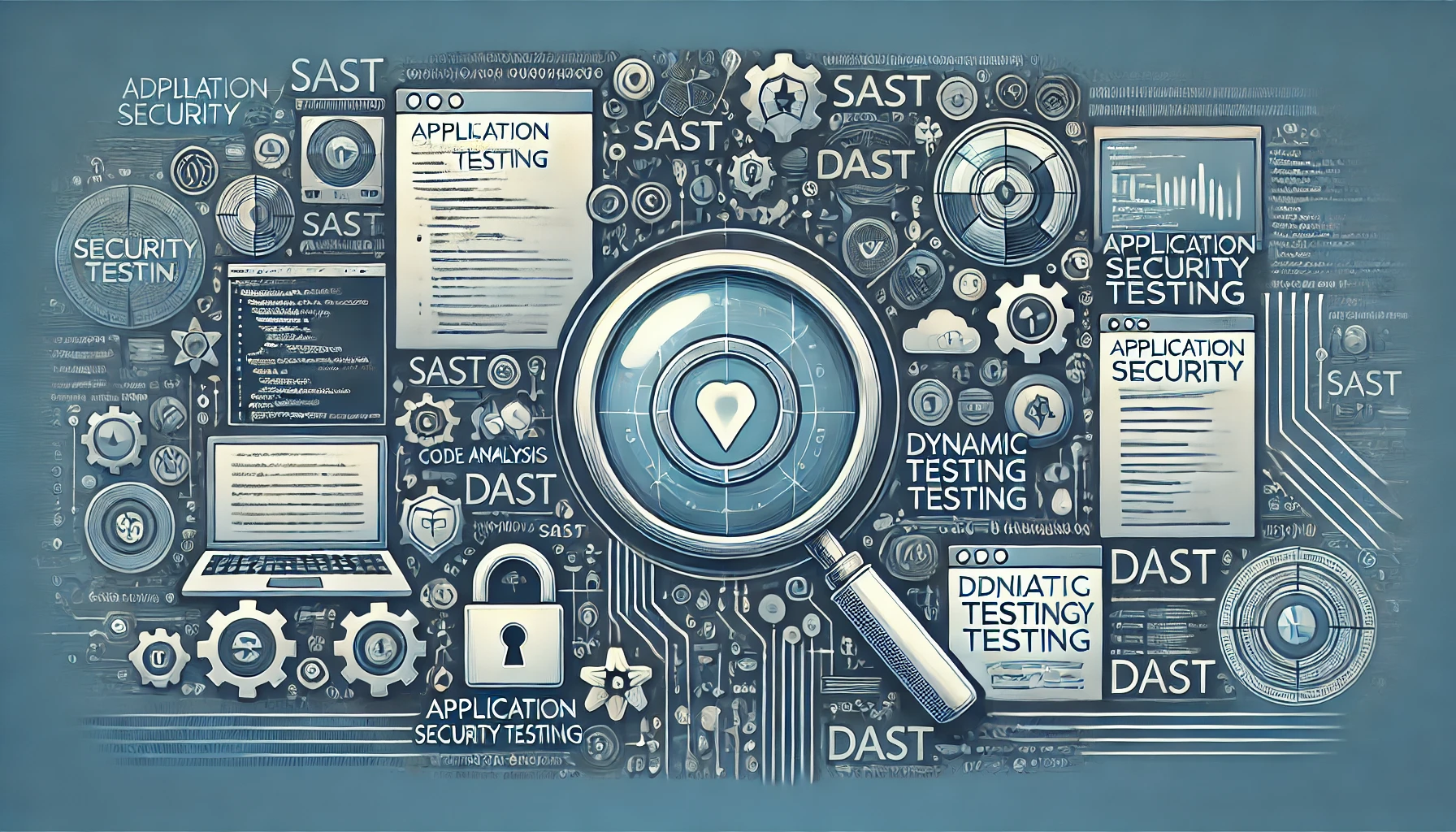
In today’s rapidly evolving digital landscape, application security is more critical than ever. With cyber threats becoming increasingly sophisticated, organizations must proactively identify and mitigate vulnerabilities within their software applications. Two primary methods for achieving this are Static Application Security Testing (SAST) and Dynamic Application Security Testing (DAST). This comprehensive guide delves deep into SAST and DAST, comparing their methodologies, benefits, limitations, and best practices to help you make informed decisions about securing your applications.
Introduction to Application Security Testing
Application security testing is the process of making applications more resistant to security threats by identifying and mitigating potential vulnerabilities. As applications become more complex and integral to business operations, ensuring their security is paramount. Security breaches can lead to:
- Financial Losses: Due to fraud or theft of intellectual property.
- Reputational Damage: Loss of customer trust and brand value.
- Legal Consequences: Non-compliance with regulations can result in fines.
Understanding SAST and DAST
What is SAST?
Static Application Security Testing (SAST), also known as white-box testing, involves analyzing the application’s source code, byte code, or binary code to identify vulnerabilities without executing the program. It aims to find security flaws such as:
- SQL Injection
- Cross-Site Scripting (XSS)
- Buffer Overflows
- Insecure Cryptographic Storage
What is DAST?
Dynamic Application Security Testing (DAST), or black-box testing, involves testing the application in its running state. It simulates external attacks to find vulnerabilities that an attacker could exploit, focusing on the application’s exposed interfaces and inputs.
How SAST and DAST Work
SAST Methodology
- Code Analysis: SAST tools scan the source code for patterns that indicate security vulnerabilities.
- Data Flow Analysis: Examines how data moves through the application to identify tainted data paths.
- Configuration Checks: Reviews application configurations for insecure settings.
- Reporting: Generates reports highlighting vulnerabilities, their locations in the code, and remediation recommendations.
DAST Methodology
- Reconnaissance: Identifies the application’s attack surface by mapping all exposed endpoints.
- Input Fuzzing: Sends various inputs to the application to provoke unintended behavior.
- Vulnerability Detection: Monitors responses for signs of security weaknesses.
- Exploitation Attempts: Tries to exploit identified vulnerabilities to assess their impact.
- Reporting: Provides detailed findings with evidence of vulnerabilities and suggested fixes.
Comparing SAST and DAST
Strengths of SAST
- Early Detection: Identifies vulnerabilities during the development phase.
- Comprehensive Coverage: Analyzes all possible execution paths.
- Code-Level Insights: Pinpoints the exact location of vulnerabilities in the code.
- Integration: Can be integrated into the development environment (IDE).
Strengths of DAST
- Real-World Simulation: Tests the application in a running state, simulating actual attack scenarios.
- Technology Agnostic: Works regardless of the programming language or technology stack.
- No Source Code Required: Useful when the source code is unavailable.
- Finds Environmental Issues: Detects configuration and deployment-related vulnerabilities.
Limitations of SAST
- False Positives: May report issues that are not actual vulnerabilities.
- Cannot Detect Runtime Issues: Fails to identify vulnerabilities that only manifest during execution.
- Requires Source Code Access: Not suitable for third-party or legacy applications without source code.
Limitations of DAST
- Late Detection: Identifies vulnerabilities after the application is deployed.
- Limited Code Coverage: May not test all execution paths.
- Cannot Pinpoint Code Location: Provides less detailed information about where in the code the vulnerability exists.
- Longer Testing Time: Can be time-consuming, especially for large applications.
When to Use SAST vs. DAST
- SAST is most effective during the development phase. It allows developers to fix issues before the application is compiled and deployed.
- DAST is ideal for the testing and production phases. It helps identify vulnerabilities that occur due to environmental factors or misconfigurations.
For comprehensive security, a combination of both SAST and DAST is recommended, as they complement each other by covering different types of vulnerabilities.
Integrating SAST and DAST into the SDLC
Shift-Left Security
- Concept: Incorporate security testing early in the Software Development Life Cycle (SDLC).
- Implementation: Integrate SAST tools into the developers’ IDEs and CI/CD pipelines.
- Benefits:
- Reduces cost and effort required to fix vulnerabilities.
- Promotes a security-first mindset among developers.
Continuous Integration and Continuous Deployment (CI/CD)
- Integration: Automate SAST and DAST scans as part of the CI/CD pipeline.
- Tools: Use plugins and APIs to connect security tools with CI/CD platforms like Jenkins, GitLab CI, or Azure DevOps.
- Benefits:
- Ensures that code changes are continuously tested for security issues.
- Accelerates the feedback loop, enabling rapid remediation.
Best Practices for Implementing SAST and DAST
Tool Selection
- Criteria:
- Compatibility with programming languages and frameworks.
- Integration capabilities with existing tools and workflows.
- Accuracy in detecting vulnerabilities with minimal false positives.
False Positives and Negatives
- Mitigation:
- Regularly update tools to the latest versions.
- Customize rule sets to align with the application’s context.
- Validate findings manually or with additional tools.
Training and Awareness
- Developer Training:
- Educate developers on secure coding practices.
- Provide training on how to interpret and remediate findings from SAST and DAST tools.
Policy and Compliance
- Standards:
- Align security testing with industry standards like OWASP Top Ten, SANS/CWE Top 25.
- Ensure compliance with regulations like GDPR, HIPAA, or PCI DSS.
Common Tools and Technologies
Popular SAST Tools
- SonarQube: Open-source platform supporting multiple languages.
- Fortify Static Code Analyzer: Enterprise-level tool with extensive language support.
- Checkmarx: Offers deep code analysis and integrates with DevOps pipelines.
- Veracode Static Analysis: Cloud-based solution with a focus on scalability.
Popular DAST Tools
- OWASP ZAP (Zed Attack Proxy): Open-source tool ideal for penetration testers.
- Burp Suite: Comprehensive platform for web application security testing.
- Acunetix: Automated tool with vulnerability scanning and management features.
- Netsparker: Known for its accuracy and automation capabilities.
Case Studies
Case Study 1: SAST Implementation in a Financial Institution
Background: A large bank needed to secure its in-house developed applications to protect sensitive customer data.
Actions Taken:
- Integrated SAST tools into the developers’ IDEs.
- Conducted secure coding training sessions.
- Established a policy requiring code scans before merging.
Results:
- Reduced the number of security vulnerabilities by 70%.
- Improved developer awareness of security best practices.
- Accelerated the development process by catching issues early.
Case Study 2: DAST for E-commerce Platform Security
Background: An online retailer wanted to ensure its web applications were secure against external threats.
Actions Taken:
- Deployed DAST tools to perform regular scans on production systems.
- Integrated DAST into the CI/CD pipeline for continuous monitoring.
- Collaborated with security teams to remediate identified vulnerabilities.
Results:
- Detected critical vulnerabilities that were previously unnoticed.
- Enhanced customer trust by demonstrating a commitment to security.
- Achieved compliance with PCI DSS requirements.
Future Trends in Application Security Testing
Interactive Application Security Testing (IAST)
- Definition: Combines elements of SAST and DAST by analyzing code in real-time during execution.
- Benefits:
- Provides contextual insights.
- Reduces false positives.
- Offers real-time feedback.
Runtime Application Self-Protection (RASP)
- Definition: Embeds security mechanisms within the application to protect it during runtime.
- Benefits:
- Immediate threat detection and response.
- Protects against zero-day vulnerabilities.
Artificial Intelligence and Machine Learning
- Applications:
- Enhancing the accuracy of vulnerability detection.
- Predicting potential security flaws based on code patterns.
- Benefits:
- Improved efficiency.
- Reduction in manual effort.
Conclusion
Both SAST and DAST are essential components of a robust application security strategy. While SAST allows for early detection of vulnerabilities at the code level, DAST provides insights into how the application behaves in a real-world environment. By understanding the strengths and limitations of each, organizations can implement a comprehensive security testing approach that significantly reduces the risk of breaches.
Integrating these tools into the SDLC and adopting best practices ensures that security becomes an integral part of the development process, ultimately leading to more secure and reliable applications.
Frequently Asked Questions (FAQs)
Q1: Can SAST and DAST tools replace manual code reviews and penetration testing?
A1: No, while SAST and DAST tools automate vulnerability detection, they cannot entirely replace the insights gained from manual code reviews and expert penetration testing. A combined approach yields the best results.
Q2: How often should SAST and DAST scans be performed?
A2: SAST scans should be performed continuously during development, ideally with each code commit. DAST scans should be conducted regularly, especially after significant changes or deployments.
Q3: Are there open-source options for SAST and DAST tools?
A3: Yes, tools like OWASP ZAP (DAST) and SonarQube (SAST) are open-source and widely used in the industry.
Q4: How can we reduce false positives in SAST and DAST tools?
A4: Customize the tool’s rule sets, regularly update the tools, and validate findings through manual reviews or additional scanning tools to reduce false positives.
Q5: Is it necessary to use both SAST and DAST, or can we rely on one?
A5: Using both is recommended, as they complement each other by covering different aspects of security. Relying on one may leave certain vulnerabilities undetected.
References and Further Reading
- OWASP Application Security Verification Standard (ASVS): OWASP ASVS
- NIST Special Publication 800-53: Security and Privacy Controls
- SANS Institute: Top 25 Software Errors
- Veracode State of Software Security Report: Veracode SOSS
- ISO/IEC 27034-1:2011: Application Security
Stay Connected with Secure Debug
Need expert advice or support from Secure Debug’s cybersecurity consulting and services? We’re here to help. For inquiries, assistance, or to learn more about our offerings, please visit our Contact Us page. Your security is our priority.
Join our professional network on LinkedIn to stay updated with the latest news, insights, and updates from Secure Debug. Follow us here







